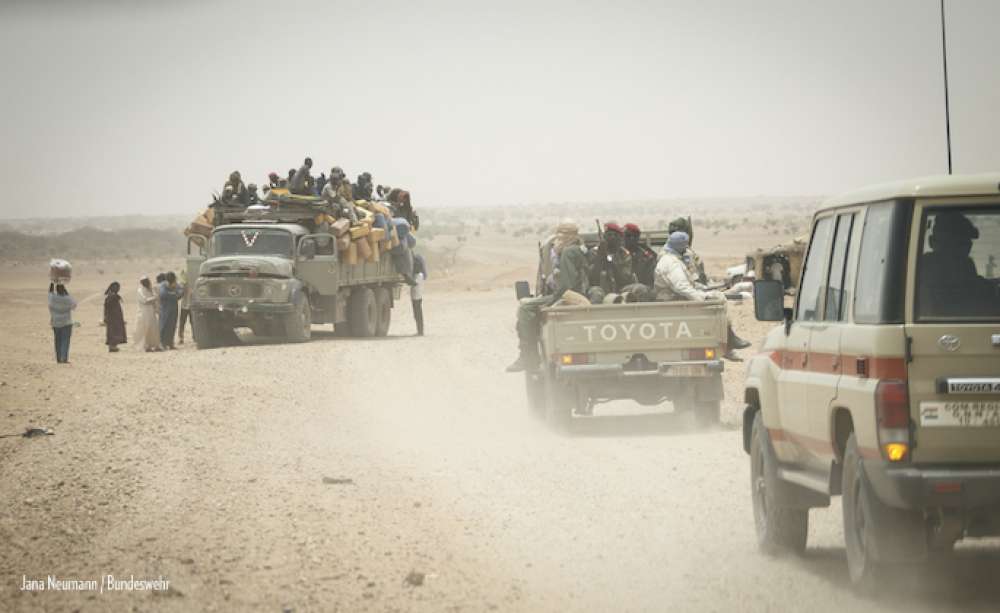Reinforcing Border Control: What’s at Stake for Migrants?

Migration has become an issue that can decide elections. As a result, the policy of the day is to try to limit the irregular movement of people, a trend of particular prominence in Europe. As such, European governments are increasingly seeking to establish control over routes abroad that see voluntary and forced migrants moving alongside each other (so-called “mixed migration routes”).
However, they face a number of challenges and constraints in this pursuit. First, borders are generally porous along transit routes, particularly in fragile and conflict-ridden settings, making them difficult to control. Moreover, refugee and human rights law dictate and limit to what extent and through which means a border can be controlled. Finally, increasing border control can have negative repercussions for regional development and stability, two factors that in themselves greatly influence migration decisions.
Capacity building for border management has emerged as a policy that tries to square this circle by making border management more effective while also addressing the protection needs of different migrant groups. However, critics have argued that this is merely another way of externalizing violence by moving border control further away from host countries, thus making migrants even more vulnerable.
GPPi partnered with the Danish Refugee Council and the Regional Mixed Migration Secretariat in Dakar to shed light on the scope, potential benefits, and risks of capacity building for border management. We focused our study on Mali and Niger, where the northbound flow of mixed migration has turned capacity building for border management into a growth industry. Does capacity building achieve what it promises? Is it as dangerous for migrants as critics claim? And what can donors do to improve these programs?
Our results are summarized below:
- At least 69 such projects, with a combined financial volume of at least €1.2 billion, have been implemented or approved for Niger and Mali since 2007. A majority of these projects aim at improving security-oriented border management and control, rather than protection capacity.
- Some projects are geared explicitly towards addressing the protection needs of people on the move, often in parallel with activities that bolster border control. Trainings on topics such as the rights of refugees are the most frequent approach to building protection capacity in border management.
- Existing knowledge on the impact of these trainings suggests that donors cannot expect to improve protection only by funding training programs.
- Since capacity building for border control occurs in complex political environments shaped by various political pressures and other incentives, including budget support, it is difficult to single out particular capacity building activities and gauge their specific effect on migrants’ vulnerabilities.
- Based on interviews in Mali and Niger as well as with representatives of implementing agencies based in Europe, we conclude that the growing capacity and will to control borders in Niger and Mali has indeed exacerbated the vulnerabilities of people on the move. Interventions that influence the political dynamics in the Economic Community of West African States (ECOWAS) have had a destabilizing effect. Some important livelihood strategies reliant on regular, circular migration, as well as some in the “migration industry,” are being curtailed without providing adequate income generation alternatives. Furthermore, efforts to control migration are fostering negative perceptions of migration that, in turn, feed discrimination against migrants.
- Our findings also suggest that increased border control capacity exacerbates the risks migrants face by pushing them onto more precarious migration routes and, to a lesser extent, expanding the space for their abuse and exploitation at border-crossings and checkpoints.
To reduce the potential negative impact of capacity building for border management on the vulnerabilities of people on the move, and to increase the positive potential of such programs, we recommend that donor governments take the following steps:
- Safeguard stability and the security of livelihoods;
- Support protection of all migrants and ensure access to asylum;
- Prevent maltreatment and repression.
See here for more details on how this can be achieved.
The executive summary and the full “Protection Fallout” report, including our mapping of capacity building projects, are available in English and French.







